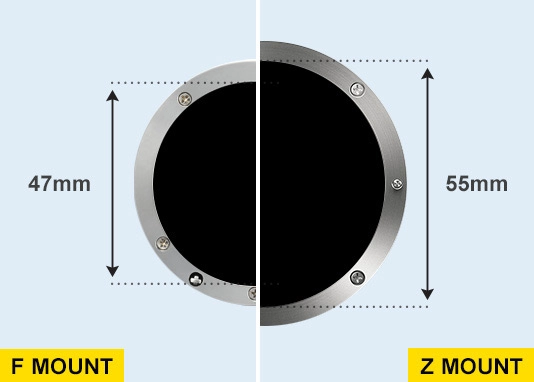Camera technology has come a long way since the Nikon F mount was introduced way back in 1959. F mount is used to this day on Nikon’s line of DSLR cameras. But, while the mount is technically the same the technology is different from one era to the next. For instance, Nikon’s modern F mount lenses all have electronically actuated apertures, much like Canon cameras have had for several decades. There is no support on old Nikon cameras for electronically actuated apertures. There are also electrical contacts in modern F mount lenses that allow the use of USM motors, VR stabilizers, and other electronic wizardry. But none of that existed until very recently which means none of those lenses will work properly on the last Nikon film bodies. Compare this to Canon where the very latest EF lenses still work on all EF camera bodies, including all the EF film bodies. It’s easy to see why photographers have been moving to Canon from Nikon for many years. It’s not that Nikon is bad, it’s that the camera mount situation is confusing and limiting. While professionals have the know how to make sense of it all, new photographers often take the path of least resistance.

Nikon’s F mount situation is currently a disadvantage for them. For Z mount camera owners it means they can’t use hardly any of Nikon’s old DSLR and SLR lenses on their cameras. Contrast this with Canon users who have a sea of 100’s of millions of EF lenses to choose from. In 20 or 30 years it might be irrelevant, but as of right now, Canon’s user base has a distinct advantage in being able to buy and use the older high quality autofocus lenses. Whether it’s what you’d want to do as a professional or not, you never know when in this crazy world having that extra flexibility to choose a different lens might be a great thing.
Nikon has been trying to eliminate the old crud from F mount such as the screw drive, and some of their latest DSLR’s no longer have screw drive motors in them. Those F mount cameras only support USM style autofocus lenses that have been the standard in the industry for many years. Despite these attempts to modernize their system it failed to gain enough traction and Nikon has already ceased production of most of their DSLR lineup and a large number of F mount lenses.
The issue with Nikon’s F mount is that when Nikon first introduced autofocus lenses to F mount they didn’t bite the bullet and change their lens mount. Instead they kept the F mount the same and added a hole in the mount where a screw drive connects to the lens. The screw drive works by connecting the lens AF group to a motor inside the camera body. The motor in the camera itself is what drives the autofocus in the lens. Because the motor and the lens are separated it means that none of these lenses will work with Z mount cameras because Nikon has not made a Z mount camera with a screw drive motor in it.
Nikon’s Z mount is very similar to Canon’s RF mount in that it is designed for modern style lenses with USM motors but it lacks the easy backwards compatibility that Canon’s RF mount has with all of EF mount.
The bottom line is that many if not most Nikon F mount lenses with AF will not AF at all with their new Z mount, nor will they work on newer Nikon DSLR’s that don’t have the screw drive.
The only kind of Nikon F lenses that will work on Z mount (via an adapter) are those with the AF-S designation. The Nikon AF-S lenses use an internal USM motor which means they don’t need the old screw drive connection in order to autofocus. That makes them adaptable enough to use with an adapter on any Z mount camera.
The reasons why F mount isn’t very compatible with Z mount are numerous and far ranging, but it all begins with the fact that F mount is designed for SLR’s that use mirrors and a prism for the viewfinder. Z mount cameras have no mirror or prism and use an electronic viewfinder (essentially a tiny computer monitor) to see through the lens.
Since Z mount cameras have no mirror, they have no mirror box, which is the space required for the mirror to move around inside of the camera. Removing the mirror box allows the designers to move the lens mount closer to the sensor. This results in a reduced back focus distance for Z mount lenses. As a rule no mirrorless lenses are compatible with SLR or DSLR cameras because of the reduced back focus distance of mirrorless lenses.
Another issue with older F mount lenses is the varying ways in which they actuated the lens aperture. Many were mechanical, then they were mostly electronic, but many of those electronic aperture lenses still used the old screw mount AF system. It wasn’t until much more recently in the history of F mount that Nikon finally went to a fully self contained electronic lens. Only those latest generation lenses that are fully self contained and fully electronic will work as expected on Nikon Z mount cameras via the Nikon FTZ adapter.
If you’re a collector of old Nikon film cameras you’ll find that navigating the various technological changes makes adapting older lenses to newer cameras or newer lenses to older cameras something of a pain.
Z mount is also larger (55mm diameter) than the old F mount (47mm diameter).

It should be obvious that the different size of the mount means that the old screw drive lenses are probably never going to work properly on the new Z mount unless a Z mount camera and custom adapter are designed specifically to allow those old lenses to work on Z mount.
A lack of backwards compatibility isn’t necessarily the end of the world, but it’s hurting Nikon at a time when they’re already losing ground to Sony, Canon, and the rest of the mirrorless world.
The good news for Z mount is that the new, modern mount ensures that all Z mount lenses will be working perfectly fine on Z mount cameras for the foreseeable future. There won’t be any funny business like with F mount and the various confusing changes that it went through.
Z mount brings many of the advantages that all the other mirrorless mounts bring to the table. Since Z mount is much larger than F mount this makes it easier to design large aperture lenses like the 58mm f/0.95 that they introduced when they launched Z mount.

While that lens is impressive in theory, it’s not a realistic tool for all professionals as it is a fully manual focus lens. Many photographers are going to look at the $7,995 price on this manual focus lens and say “SERIOUSLY?”.
The bottom line is that Nikon appears to be giving up on F mount in exchange for Z mount. With the market’s attention shifting hard towards mirrorless, the idea that Nikon can catch Canon and Sony via DSLR sales seems less likely than ever.
In the end I think it is a good sign for Nikon that they’re serious about Z mount. It might be difficult to challenge Canon and Sony simultaneously. It’s also possible that F mount may be at its end. Nikon is known to be using Sony sensors, and Nikon is also sourcing Tamron and Sigma for some of their mirrorless Z mount lenses. It’s unclear if Nikon has the bandwidth to maintain 2 systems, and if they’re basically just rebranding another company’s product, what is the point? It’s possible that Nikon would be better off becoming a 3rd party lens manufacturer. With the move to Sony sensors it’s hard to see how buying a Nikon camera will give users something tangibly different from a Sony camera. They might as well just take the lenses they’ve designed and built and make them for Sony/Canon/L-mount and pray that they can earn back some of the mystique that Nikon built up after a century of making film cameras.

